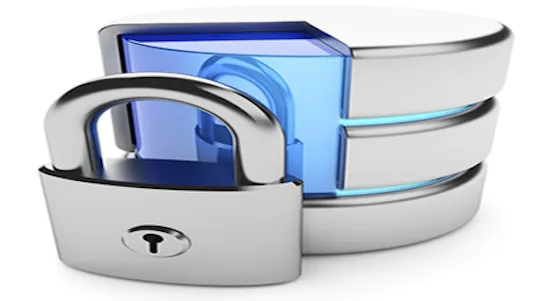
Cybersecurity and Its Ten Domains 
Discover the exciting field of cybersecurity with this course! Learn about the ten domains of cybersecurity, engage with expertly produced videos, gain insight from industry experts, and practice assessing your environmental awareness. With no prior experience in IT security required, you can gain knowledge and understanding of cybersecurity and its domains. Plus, you can even apply for undergraduate level course credit at Kennesaw State University. Join us now and start your journey into the world of cybersecurity! ▼
ADVERTISEMENT
Course Feature
![]() Cost:
Cost:
Free
![]() Provider:
Provider:
Coursera
![]() Certificate:
Certificate:
Paid Certification
![]() Language:
Language:
English
![]() Start Date:
Start Date:
10th Jul, 2023
Course Overview
❗The content presented here is sourced directly from Coursera platform. For comprehensive course details, including enrollment information, simply click on the 'Go to class' link on our website.
Updated in [June 30th, 2023]
What skills and knowledge will you acquire during this course?
Participants in this course will acquire skills and knowledge in the field of cybersecurity and its ten domains. They will gain understanding of cybersecurity concepts through engaging with expertly produced videos and insights from industry experts. Additionally, participants will have the opportunity to assess their environmental awareness, access materials on governance and risk management, compliance, business continuity and disaster recovery, cryptography, software development security, access control, network security, security architecture, security operations, and physical and environmental security. Learning will be assessed using strategies aligned to knowledge and understanding. Prior experience in IT security is not required, as participants will be provided with relevant open and free resources to assist their learning. At the end of the course, participants will have the option to apply for undergraduate level course credit at Kennesaw State University, subject to admission requirements.
How does this course contribute to professional growth?
The course contributes to professional growth by providing participants with knowledge and understanding of cybersecurity and its various domains. Participants will engage in community discourse and online interaction, gaining insight from industry experts and practicing their environmental awareness. The course covers topics such as governance and risk management, compliance, business continuity and disaster recovery, cryptography, software development security, access control, network security, security architecture, security operations, and physical and environmental security. Participants will have the opportunity to assess their learning through knowledge assessments and will be provided with relevant open and free resources to assist them.
Is this course suitable for preparing further education?
The course "Cybersecurity and Its Ten Domains" is suitable for preparing further education. Participants will gain knowledge and understanding of cybersecurity and its domains through engaging with expertly produced videos, industry experts, knowledge assessments, and practice assessing their environmental awareness. The course covers various topics such as governance and risk management, compliance, business continuity and disaster recovery, cryptography, software development security, access control, network security, security architecture, security operations, and physical and environmental security. Prior experience in IT security is not required, and participants will be provided with relevant open and free resources to assist their learning. Additionally, at the end of the course, participants have the option of applying for undergraduate level course credit at Kennesaw State University.
Course Syllabus
Welcome and Course Overview
Checkout our marquee speaker. She's the Chief Privacy Officer at Coca Cola.Introduction to Security, Access Control, and Software Development Security
In this module we cover some of the fundamentals of security that will assist you throughout the course. We will then introduce you to two domains of cyber security: access control and software development security. Focus will be on areas such as confidentiality, integrity, and availability, as well secure software development techniques.Business Continuity and Disaster Recovery Planning and Cryptography
In this module we are going to delve a little deeper into cyber security by covering business continuity and disaster recovery planning and cryptography. Learners will be exposed to what a disruptive event is and how the federal government through agencies such as FEMA handles disasters. We will also covers encryption and decryption and the various techniques used.Information Security Governance and Risk Management & Legal, Regulations, Investigations, and Compliance
In this module we are going to cover some of the non-technical topics associated to cyber security: Information security governance and risk management and legal, regulations, investigations, and compliance. It is important to realize, that non-technical does not mean easy, or not important. In fact, I would like to argue that they are more important that the technical side of cyber security.Operations Security & Physical and Environmental Security
In this module we are going to cover what amount to some of the more intuitive parts of cybersecurity: operations security and physical and environmental security. Learners will understand operations security from a competitor/enemy/hacker’s viewpoint and then develop and apply countermeasures accordingly. Learners will also be exposed to electric power issues such as brownouts, fire detection and suppression, and HVAC.Security Architecture and Design & Telecommunications and Network Security
In this module we are going to cover some of the most technical and comprehensive topics that cyber security has to offer as we look at Security Architecture and Design and Telecommunications and Network Security. Learners will be exposed to security models such as Bell LaPadula, Clark-Wilson, Mandatory Access Control (MAC), Discretionary Access Control (DAC), Role-Based Access Control (RBAC), and Access Matrix. We will also describe the Open Systems Interconnect (OSI) model and its seven layers.Receive Undergraduate Course Credit at Kennesaw State University
In this module we provide details about leveraging this MOOC for credit at the undergraduate level at Kennesaw State University. It is very important that learners follow directions carefully.Pros & Cons

Excellent content and resources for learning.

Motivates learners to explore more about Information Security.

Provides a comprehensive understanding of Cybersecurity.

Poor quality videos and lack of substance in the course material.

Reliance on external resources and broken links.

Lack of effort and professionalism in course preparation.
Course Provider

Provider Coursera's Stats at AZClass
Discussion and Reviews
0.0 (Based on 0 reviews)
Explore Similar Online Courses

ServiceNow JavaScript Tutorial

Build Online Stores and Websites in WooCommerce for Free

AI Companions: Social Impact - How tech like ChatGPT virtual companions and robots will change us

AI art with Blender and Stable Diffusion w& midjourney Model

EASY Offline Stable Diffusion Model Training make your own custom LoRA with Kohya simple process!

Ultimate Stable Diffusion AI art Course (beginner to pro)

Stable Diffusion Deforum: Going Viral on TikTok & Instagram

Stable Diffusion 101 : Beginners Guide To Building AI Art

Stable Diffusion Masterclass: AI Assisted Art Generation

Introduction to Stable Diffusion for Developers & Designers

ULTIMATE FREE LORA Training In Stable Diffusion! Less Than 7GB VRAM!


Start your review of Cybersecurity and Its Ten Domains